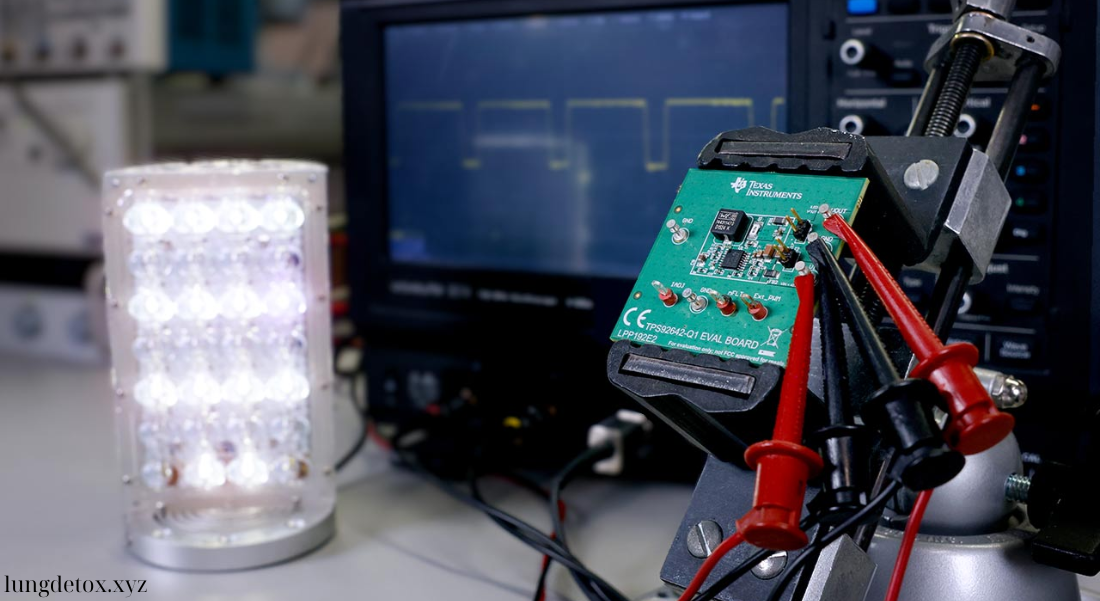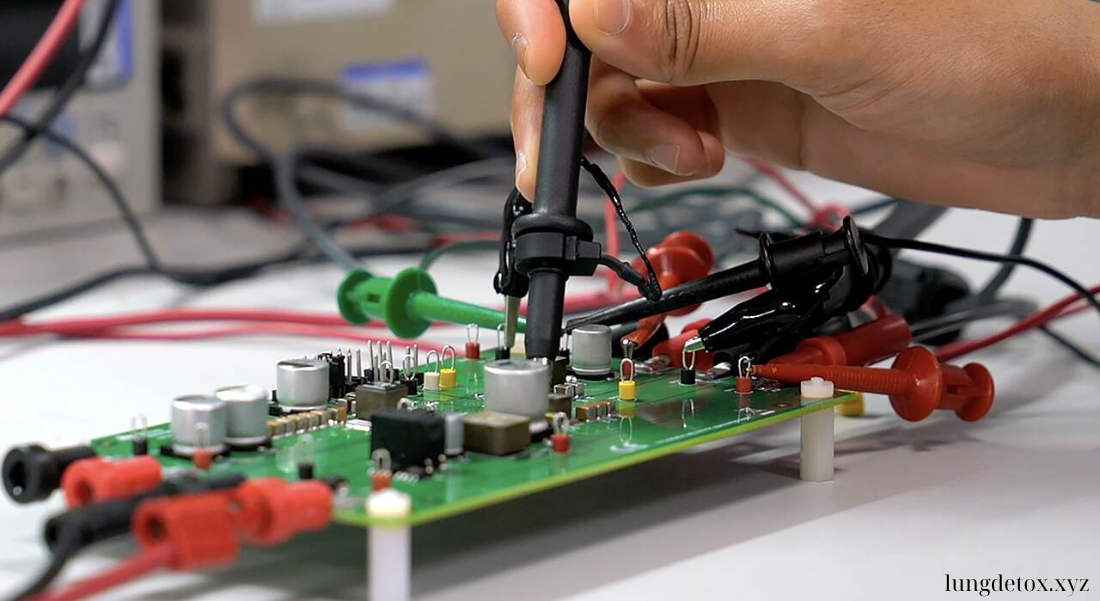When developing high-performance electronics, choosing the right sensors can make all the difference. Texas Instruments (TI) leads in sensor technology, offering a wide range of highly accurate, efficient, and robust sensors that enhance electronics projects across various applications. From precision temperature and humidity sensors to advanced proximity and motion detection solutions, TI sensors deliver reliability, efficiency, and functionality for electronics, whether you’re working on personal projects, prototyping, or industrial applications.
Key Highlights
- Why Choose Texas Instruments Sensors: TI’s commitment to quality, innovation, and reliability.
- Benefits of TI Sensors for Electronics Projects: How these sensors improve project performance and versatility.
- Top Texas Instruments Sensors for Electronics Projects: A look at popular sensor types and their applications.
- Choosing the Right TI Sensor for Your Project: Tips for selecting sensors based on project requirements.
- Getting Started with TI Sensors: Tools and resources to accelerate project development.
1. Why Choose Texas Instruments Sensors: Quality and Innovation
A Trusted Name in Electronics
Texas Instruments has earned a strong reputation in the electronics industry for its high-quality components, advanced research, and commitment to innovation. TI’s sensor solutions meet rigorous standards, providing reliable data collection and measurement across various industries and applications, including consumer electronics, industrial automation, and automotive solutions.
- Precision and Accuracy: TI engineers sensors for precise measurements, ensuring reliability in critical applications.
- Energy Efficiency: Many TI sensors consume minimal power, making them ideal for battery-powered or energy-conscious designs.
- Versatility and Range: TI offers sensors for temperature, humidity, pressure, motion, proximity, and more, catering to a wide range of applications.
2. Benefits of TI Sensors for Electronics Projects: Enhancing Functionality and Performance
Enhanced Accuracy and Reliability
For any electronics project, accurate and consistent data is essential. Texas Instruments sensors deliver precise measurements, reducing errors and improving the overall performance of devices. This proves especially useful in applications where precise data is critical, like medical devices or industrial monitoring.
- Consistent Performance: TI sensors deliver stable and accurate readings over extended periods, making them ideal for long-term monitoring.
- Reduced Error Margins: High precision minimizes errors, leading to improved functionality and a better user experience in end devices.
Low Power Consumption
TI designs many of its sensors with energy efficiency in mind, which is essential for battery-operated devices or IoT applications that need to run for long periods without frequent recharging or battery replacement.
- Energy Efficiency for IoT: Low power consumption extends battery life, which benefits wearable tech, remote sensors, and other portable devices.
- Ideal for Energy-Conscious Designs: TI’s low-power sensors make it easy to create eco-friendly, efficient systems that perform consistently over time.
Simplified Integration
With easy integration into various platforms, including microcontrollers, development boards, and embedded systems, TI sensors work well for both beginner and advanced electronics projects.
- Easy to Interface: Most sensors come with straightforward interfaces like I2C, SPI, or analog output, ensuring compatibility with many microcontrollers and processors.
- Comprehensive Documentation: TI provides extensive documentation, development kits, and application notes, simplifying the development process for both hobbyists and professionals.

3. Top Texas Instruments Sensors for Electronics Projects: Popular Types and Uses
Temperature Sensors
TI’s temperature sensors stand out for their accuracy and are available in both analog and digital formats. They work well in environments where precision is critical, such as HVAC systems, medical devices, and wearable electronics.
- TMP117: This digital temperature sensor provides high accuracy (±0.1°C), making it suitable for applications requiring precise temperature control.
- TMP36: An analog temperature sensor that operates with low power and a simple interface, perfect for small electronics projects.
Proximity and Ambient Light Sensors
Commonly used in applications requiring environmental awareness, such as lighting control, smartphones, and IoT devices, these sensors detect the presence of objects or measure ambient light levels to adjust settings automatically, enhancing user experience.
- OPT3001: This ambient light sensor accurately reads lux levels, making it ideal for adjusting screen brightness or lighting systems.
- TMD2620: A proximity sensor designed to detect nearby objects, making it useful for gesture recognition or automatic lighting adjustments.
Motion and Accelerometer Sensors
These sensors are essential for projects that involve movement tracking, tilt detection, or activity monitoring, and they are widely used in fitness trackers, automotive safety systems, and robotics.
- DRV2605: A haptic driver that creates tactile feedback, making it useful for projects needing vibration or motion effects.
- MPU6050: A 6-axis accelerometer and gyroscope sensor that detects acceleration and rotation, perfect for wearables, drones, and gaming applications.
Pressure Sensors
Known for their accuracy, TI pressure sensors are used in applications where pressure measurement is essential, such as weather stations, medical devices, and industrial monitoring.
- MSP430: This microcontroller comes with built-in pressure-sensing capabilities, ideal for integrated pressure monitoring applications.
- LMP90080: A precision analog front-end (AFE) that pairs well with pressure sensors for highly accurate pressure readings.
Humidity Sensors
Common in climate control systems, agricultural monitoring, and various industrial applications, TI humidity sensors help monitor and control moisture levels.
- HDC2080: A digital humidity and temperature sensor with low power requirements, ideal for environmental monitoring in IoT applications.
- HDC2010: A high-accuracy humidity sensor with a compact design, perfect for portable or space-constrained devices.
4. Choosing the Right TI Sensor for Your Project: Factors to Consider
Define Your Application Requirements
The first step in selecting the right sensor is to determine your project’s requirements. Whether you need precise temperature control, motion detection, or light adjustment, identifying your specific needs will help you choose the best option.
- Environment: Consider factors like temperature range, humidity levels, and exposure to elements.
- Power Requirements: For battery-powered projects, select sensors with low power consumption to maximize operational life.
Choose Based on Output and Interface
TI sensors come with various output types and interfaces, so ensure compatibility with your microcontroller or system.
- Digital vs. Analog: Digital sensors (with I2C or SPI output) are easier to integrate with microcontrollers, while analog sensors may need additional circuitry.
- Interface Compatibility: Choose sensors with interfaces compatible with your development board or processor to streamline integration.
Consider Accuracy and Precision Needs
Different applications require varying levels of accuracy. Medical or scientific projects may need high-precision sensors, while less critical applications can use general sensors.
- High Precision for Sensitive Applications: Choose sensors with a low error margin for applications where accuracy is critical, like medical devices.
- Standard Accuracy for Basic Projects: For general-purpose projects, standard accuracy can be sufficient and more cost-effective.
5. Getting Started with TI Sensors: Tools and Resources for Development
Texas Instruments Development Kits
TI offers development kits for most of its sensors, providing a convenient way to test and integrate sensors into projects. These kits often come with sample code, making it easy to get started, even if you’re new to working with sensors.
- Sensor Booster Packs: TI’s Booster Packs are expansion boards for the LaunchPad ecosystem, allowing easy integration of sensors with TI microcontrollers.
- Evaluation Modules (EVMs): TI’s EVMs offer a complete platform to test and prototype with specific sensors before full-scale development.
Comprehensive Documentation and Application Notes
TI provides extensive documentation, including datasheets, application notes, and integration guides, which help users understand sensor functionalities and design effective applications.
- Datasheets and Reference Designs: TI’s datasheets offer detailed technical specifications, ensuring correct setup and integration.
- Application Notes: These guides offer practical insights, examples, and best practices for incorporating sensors into different applications.
Online Resources and Community Support
TI’s website and forums offer a wealth of resources, including online tutorials, project ideas, and a community of users who share insights, making it easier to get help and inspiration for your projects.
- TI E2E Community: TI’s E2E Community forum allows users to connect with experts and other developers, providing a valuable resource for troubleshooting and advice.
- TI Resource Explorer: This online platform provides access to software libraries, documentation, and example code for TI’s products.
Conclusion
Texas Instruments sensors offer a solid foundation for building versatile, high-performance electronics projects. By combining precision, reliability, and energy efficiency, TI’s sensor lineup can elevate your projects, whether you’re working on a DIY prototype or a sophisticated industrial application. With a wide range of sensors available, from temperature and motion to pressure and light, TI provides solutions that meet the specific needs of any project. By leveraging TI’s tools, development kits, and community resources, you can accelerate your development process and create innovative solutions with ease.
FAQ
- What types of sensors does Texas Instruments offer?
TI offers temperature, humidity, pressure, proximity, ambient light, motion, and accelerometer sensors, among others. - Are TI sensors suitable for low-power applications?
Yes, TI designs many sensors with low power consumption, making them ideal for battery-powered devices and IoT applications. - What are some popular TI sensors for electronics projects?
Popular TI sensors include the TMP117 (temperature), OPT3001 (ambient light), DRV2605 (haptic driver), and HDC2080 (humidity and temperature). - How can I get started with TI sensors?
Use TI’s development kits, such as Booster Packs or Evaluation Modules, along with their extensive online documentation, to test and integrate sensors into your project. - Does TI provide resources for troubleshooting and support?
Yes, TI’s E2E Community forum and Resource Explorer offer a wealth of resources, including tutorials, project examples, and expert support.
